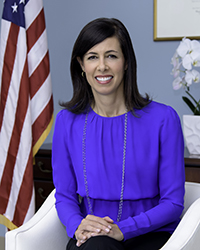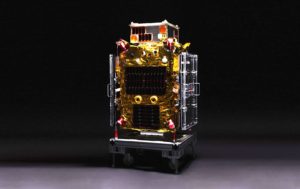The Federal Communications Commission (FCC) adopted a rule Thursday that will require low Earth orbit (LEO) operators to dispose of their satellites no later than five years after the end of a mission.
The rule applies to all “space stations ending their mission in, or passing through, the LEO region below 2,000 km altitude and planning disposal through uncontrolled atmospheric re-entry,” according to the proposed Report and Order.
However, the House Committee on Science, Space and Technology on Tuesday had sent a letter to the FCC expressing “concern” that it is acting unilaterally on an issue that “will need to be addressed comprehensively and holistically.” The Committee requested a briefing by the FCC.
“For years, it has been the recommended practice for satellite operators to deorbit their spacecraft within 25 years of completing their missions,” she said. “But 25 years is a long time. There is no reason to wait that long anymore, especially in low Earth orbit.
“With an eye to the future, today we adopt rules that shorten this period for satellites in low Earth orbit from 25 years to five years,” Rosenworcel added. “That’s big. It will mean more accountability and less risk of collisions that increase orbital debris and the likelihood of space communication failures.”
Addressing space sustainability
The news comes as on-orbit services are expected to generate $4.4 billion in cumulative revenues during 2022-2031 — depending on growth in the number of satellites in orbit, according to a report by research firm Euroconsult. The market has the potential to broaden exponentially as companies purchase services from each other, Maxime Puteaux, Euroconsult principal advisor and author of the report, previously told Connectivity Business News.
Scientific research in this area must continue, along with market levers to promote space sustainability, S. Sita Sonty, partner and associate director for aerospace and defense at advisory firm Boston Consulting Group, told Connectivity Business News.
The FCC’s action “is a great step in the right direction towards space sustainability,” Sonty said. It signals that the U.S. government is eager to lead the international space community in the drive for space sustainability and that the FCC is willing and keen to exercise its lever, she added.
“I think it is a call for other groups of stakeholders to reflect on what are their levers that are at their availability and at their disposal, such as investing in the technologies, whether that investment comes from private investors or public agencies who seek to facilitate that kind of technological development,” Sonty told Connectivity Business News.
Next steps include standardization of rules and technologies, as well as technology development for space sustainability, including traffic management and life extension for satellites, Sonty said.
Industry reaction
Commercial satellite industry revenues are expected to increase to $279 billion this year, according to a June report by the Satellite Industry Association that was cited by the FCC in its Report and Order.
Objections were also raised, including from satellite communications provider Kepler Communications, which requested the FCC recognize that satellites could fail, and therefore should establish a procedure to obtain a waiver from the five-year rule.
Earth observation providers HawkEye 360, Planet Labs (NYSE:PL) and Spire Global (NYSE:SPIR) in a joint letter also requested that the FCC recognize that satellites could fail and further requested that it remove language regarding a rule for larger constellations as it has not yet provided a definition of “large constellation,” according to the commenters.











